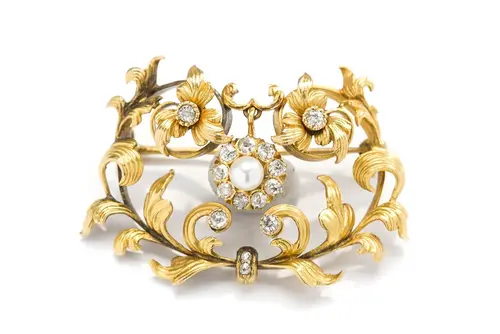


Art Nouveau is a trend in art of the last decade of the 19th century and the first decade of the 20th century. The creators of the new style opposed the fossilized principles of academism, prevailing at that time at art colleges.
In the common consciousness Art Nouveau is associated with floral motifs - and this association is absolutely correct - but incomplete. Geometric and abstract motifs can be seen just as often on architectural elements, everyday objects or in paintings. The tendency to use plant forms frequently can generally be traced to this direction in France, while geometric forms can be traced to Austria.
The new trend took different names in the countries where it appeared. From the French art nouveau (new art), through German Jugendstil ("Jugend" means youth) to the Spanish name modernismo - everywhere, however, artists strove for the stylistic unity of works of art, from architecture through advertising to the "mundane" salt shaker.
It is difficult to choose a few of the most famous Art Nouveau artists. For the purpose of this entry I have selected three exceptional artists who created at the turn of the 19th and 20th century: Alphonse Mucha, René Lalique and Louis Comfort Tiffany. The first of them, a Czech graphic artist, created his unique style. His posters, which combined the fairy-tale with the contemporary, have gone down in history. The latter designed objects of applied art (e.g. perfume bottles, vases, jewellery) and elements of interior decoration. Tiffany, on the other hand, revolutionised the stained glass technique. He introduced technical improvements which made it possible to make stained-glass elements in three dimensions, including the famous lamps.
The first violin in the Art Nouveau jewellery started to play the setting - not precious stones and metals. Jewellery amazed with sophisticated forms, insects, birds and hybrids entered the repertoire of motifs. Enamel plique-à-jour, through which light shone (a technique similar to stained glass) began to be used on a massive scale. This kind of extravagance was reserved for a very narrow group of recipients - many ladies considered such products too frivolous.